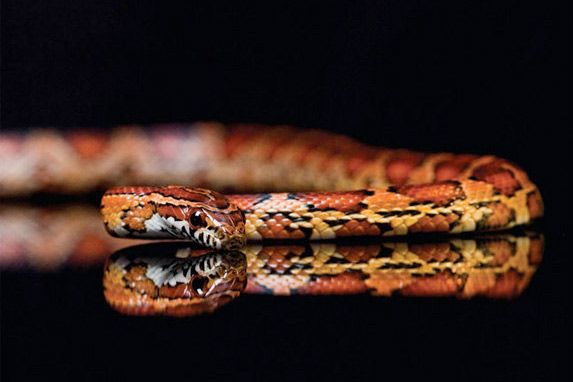Goodness, Snakes! Tummy Bugs Pose Danger to Reptiles

Snakes get stomachaches, and lizards get sick to their gizzards. Veterinarians know such reptile indigestion can be more than an annoyance, signaling a potentially fatal parasitic infection.
Diagnosing this indigestion-causing infection can be difficult, but now researchers have developed a specific test for the parasites and used it to study samples from a variety of snakes and lizards. Their results suggest the tummy bugs are more widespread than expected.
So, how do you know if your reptile has a gut bug? Symptoms depend on the species of parasite, which can infect the stomach or intestines, but in general include a thickening of the animal's midbody, regurgitation of food a few days after eating or weight loss, anorexia, lethargy and diarrhea, according to Barbara Richter, a study researcher with the University of Veterinary Medicine Vienna in Austria.
The single-celled creatures responsible are species in the genus Cryptosporidia, and their spores show up in a reptile's droppings. But other types of these parasites also infect a wide variety of other animals —including humans with compromised immune systems — so even if Cryptosporidia shows up in the droppings, it may have come from a reptile's meal, rather than an infection. [Album: World's Deadliest Animals ]
By using a more specific DNA analysis than typically used, Richter and colleagues were able to distinguish between species of Cryptospordia spores found in 672 samples of droppings and stomach contents submitted by pet owners and veterinarians.
Among the animals sampled most frequently — corn snakes and leopard geckos — the infection was more widespread than expected. It appeared in 16 percent of corn snake samples and 7 percent of leopard gecko samples.
"What was more surprising to me was the diversity of Cryptosporidium species," Richter wrote in an email to LiveScience, adding that they were also surprised to find that corn snakes were only infected by the intestinal parasite but not the stomach parasite, which is believed to be more common in snakes.
Sign up for the Live Science daily newsletter now
Get the world’s most fascinating discoveries delivered straight to your inbox.
The research was published in the May issue of the journal of Veterinary Diagnostic Investigation.
You can follow LiveScience writer Wynne Parry on Twitter @Wynne_Parry. Follow LiveScience for the latest in science news and discoveries on Twitter @livescience and on Facebook.













